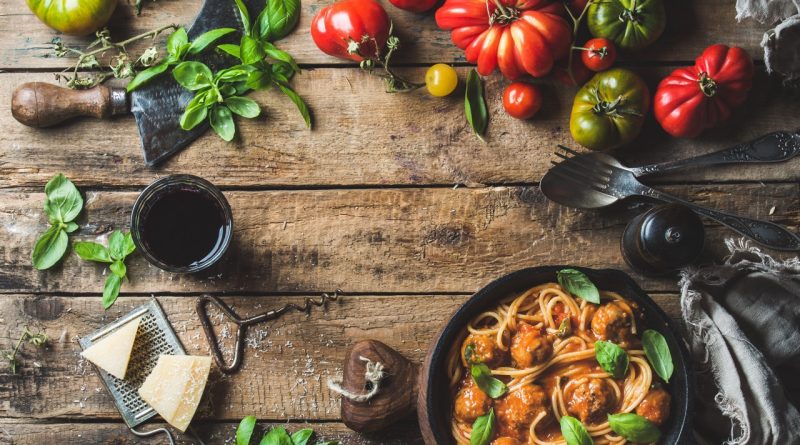The Best Materials for Cooking Utensils: Wood, Metal, or Silicone?
Choosing the right materials for cooking utensils is crucial for both culinary success and safety in the kitchen. With a variety of options available, including wood, metal, and silicone, each material comes with its own set of benefits and drawbacks. Understanding these can help you make informed decisions tailored to your cooking preferences and needs. In this article, we will delve into the essential characteristics of these materials, highlighting their advantages and disadvantages.
An Overview of Essential Cooking Utensil Materials
When it comes to cooking utensils, the material used greatly influences not only functionality but also the cooking experience. Wood, metal, and silicone are three primary materials that chefs and home cooks frequently utilize. Each of these materials has unique properties that can enhance cooking efficiency and food safety.
Wooden utensils have been a staple in kitchens for centuries, known for their natural beauty and durability. They are gentle on cookware surfaces, minimizing the risk of scratching non-stick pans. Metal utensils, on the other hand, are often favored for their sturdiness and heat resistance, making them ideal for a variety of cooking tasks. Silicone, a more modern option, offers flexibility and heat resistance, allowing for versatility in cooking and baking.
Understanding the unique characteristics of these materials will assist cooks in selecting the best utensils for their culinary endeavors. Each option provides distinct advantages and limitations that can affect cooking outcomes, maintenance, and even the enjoyment of the cooking process.
Advantages and Disadvantages of Wooden Utensils
Wooden utensils are revered for their gentle touch when it comes to non-stick cookware. The material is less likely to cause scratches or damage, ensuring that your pots and pans last longer. Additionally, wood is naturally resistant to bacteria, making it a hygienic choice in the kitchen. The aesthetic appeal of wooden utensils, often characterized by their warm tones and unique grain patterns, adds a rustic charm to cooking.
However, wooden utensils also have their drawbacks. They can absorb moisture and odors over time, potentially leading to the growth of bacteria if not properly cared for. Wooden utensils should generally not be soaked in water or placed in the dishwasher, as this can warp or crack the material. Furthermore, they may require periodic oiling to maintain their appearance and prevent drying out.
Ultimately, while wooden utensils offer several advantages, they require more maintenance than their metal or silicone counterparts. Understanding how to care for and store wooden utensils is essential for ensuring their longevity and performance in the kitchen.
The Benefits and Drawbacks of Metal Cooking Tools
Metal cooking utensils, commonly made from stainless steel, aluminum, or cast iron, are known for their strength and durability. They can withstand high temperatures and are often designed for heavy-duty use, making them ideal for tasks like flipping, stirring, and serving. Additionally, metal utensils are easy to clean and typically dishwasher-safe, which adds convenience for busy cooks.
However, metal utensils also have some significant disadvantages. They can scratch non-stick cookware, leading to damage and the potential release of harmful chemicals. Furthermore, metal utensils can become extremely hot when used in high-temperature cooking, posing a risk of burns. In terms of weight, some cooks may find heavier metal utensils cumbersome during extended use, particularly when preparing large meals.
Despite these drawbacks, metal utensils serve a critical role in the kitchen. Their longevity and ability to withstand high temperatures make them invaluable in various cooking methods, from frying to grilling. Selecting the right type of metal utensil can enhance cooking efficiency while minimizing potential risks.
Exploring the Versatility of Silicone Kitchen Utensils
Silicone utensils have surged in popularity due to their versatility and heat resistance. Capable of withstanding temperatures up to 500°F (260°C), silicone is an excellent choice for a range of cooking tasks, from baking to sautéing. They are non-stick, making food release easy and reducing the need for added oils or fats. Moreover, silicone utensils are often colorful and visually appealing, adding a modern touch to kitchen decor.
On the other hand, silicone utensils may not be as durable as wood or metal options. While they are generally resistant to staining and odors, lower-quality silicone can degrade over time, especially if exposed to high temperatures frequently. Additionally, some users find silicone utensils less effective for tasks that require precision or firmness, such as flipping pancakes or cutting dough.
In summary, silicone utensils provide a unique blend of flexibility and heat resistance that can enhance many culinary experiences. Their ease of cleaning and non-stick properties make them a favorite among many cooks, although individuals should consider their specific cooking needs and preferences when selecting silicone tools for their kitchen.
In conclusion, the choice of cooking utensil material can significantly affect your culinary endeavors. Wooden utensils offer a gentle touch and aesthetic appeal, but they require careful maintenance. Metal utensils are durable and heat-resistant, but they can damage non-stick cookware and pose burn risks. Meanwhile, silicone utensils combine versatility and ease of cleaning, though they may not be as sturdy as traditional options. Ultimately, the best choice for your kitchen will depend on your cooking style, preferences, and maintenance considerations. By understanding the advantages and disadvantages of each material, you can equip your kitchen with the right tools for delicious outcomes.
